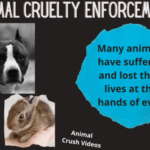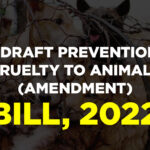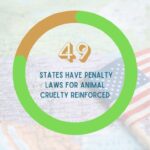In recent years, the conversation surrounding down – the soft feathers found beneath the tougher exterior feathers of birds such as ducks and geese – has escalated, revealing complex layers of ethical implications. This debate manifests a profound dichotomy: on one side, the quest for comfort; on the other, the plea for compassion and ethical treatment of animals. As consumers become increasingly aware of the ramifications of their purchasing choices, it is essential to delve into the nuanced distinctions of down production and the underlying consequences for the avian species involved.
To understand whether down is synonymous with animal cruelty, one must first examine the processes involved in its acquisition. Down is predominantly harvested from ducks and geese. There are generally two methods by which down is collected: live-plucking and post-mortem harvesting. The former method, live-plucking, is widely condemned for its inhumane approach. During this process, birds are restrained and have their feathers forcibly removed while they are still alive, causing immense pain and suffering. Reports indicate that this cruel practice not only inflicts physiological harm but also leads to severe psychological distress due to the trauma experienced by these sentient beings.
Conversely, down can also be ethically sourced from birds that have been humanely raised for meat. In this case, the feathers are collected after the birds have been slaughtered. While this method mitigates the extreme suffering inflicted on the animals, it raises further ethical questions. The process of raising these birds for consumption, regardless of the harvesting method, invariably invites scrutiny regarding the conditions of their lives: overcrowding, lack of access to natural environments, and pervasive stress are prevalent in many commercial farming operations.
Understanding the ramifications of down production necessitates a brief exploration of the poultry industry as a whole. The demand for down has burgeoned alongside the demand for meat, leading to regimes of intensive farming that prioritize profit over animal welfare. Millions of ducks and geese are bred purposefully for their down and flesh. Intensive rearing practices often result in a plethora of welfare issues. Pervasive in this system is the commodification of life: animals are viewed as mere resources rather than living beings deserving of respect and compassion.
As discussions proliferate in the public sphere regarding animal rights and welfare, one cannot overlook the role of consumer choice in perpetuating or alleviating animal suffering. Consumers face a daunting dilemma: the palpable allure of down’s softness and warmth is enticing, yet it often comes at a hidden cost – the welfare of the birds who provide it. Indeed, the emotional comfort derived from cozy down-filled products rests upon a foundation of ethical distress, necessitating a conscientious assessment of values versus needs.
In light of this conundrum, alternatives to down have emerged, gaining traction in both consumer markets and among ethically-minded individuals. Synthetic fibers, such as polyester and nylon, now imitate the luxurious feel and insulating properties of down without the associated ethical dilemmas. These materials offer an opportunity for consumers to forego animal products and provide some measure of comfort without compromising on compassion. However, it is essential to scrutinize the environmental impact of producing synthetic materials, as they too bear baggage that demands consideration. This exploration extends beyond mere consumer preferences; it implores one to consider the implications of our choices upon the planet and its inhabitants.
Moreover, fostering awareness about the conditions in which birds are raised can incite change at a legislative level. Advocacy for better welfare standards and regulations is crucial. Implementing comprehensive labeling laws can empower consumers to make informed decisions. Education is paramount; understanding the brutal realities behind the comfort of down products can shift societal conversations and spur demand for ethical alternatives.
Both consumers and activists play a pivotal role in influencing industry practices. Corporations that cling to outdated methods of down harvesting are likely to find themselves at odds with a public increasingly driven by ethical considerations. The burgeoning movement advocating against animal cruelty pushes for transparency within the supply chain, compelling companies to adopt more humane practices or risk losing their customer base. The relationship between comfort and compassion must be reevaluated in light of evolving public sentiment.
At the crux of the down debate lies a fundamental question of values: how do we reconcile a desire for comfort with the ethical imperative to treat all sentient beings with dignity? As society contemplates this poignant inquiry, individuals are called upon to engage in mindfulness about their personal purchasing habits. The decision to purchase down products requires a careful balancing of desires against the ramifications for living creatures, and indeed, for the shared ecological landscape.
In summary, the ambiguity surrounding down production calls for a multifaceted exploration of ethics, consumer behavior, and animal welfare. The juxtaposition of comfort against compassion presents an ethical conundrum that cannot be ignored. As awareness grows and discussions evolve, it is incumbent upon us to reflect on our choices and advocate for change that honors the sanctity of animal life while maintaining environmental sustainability.







